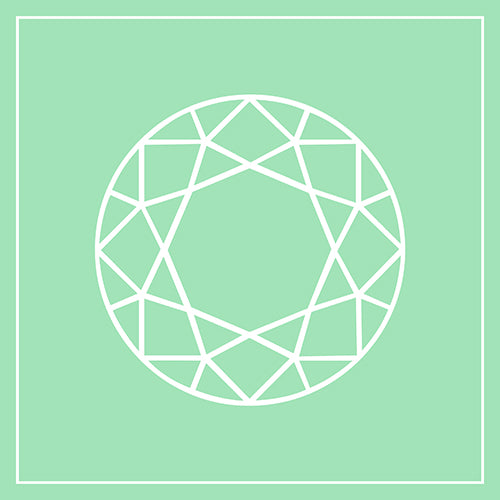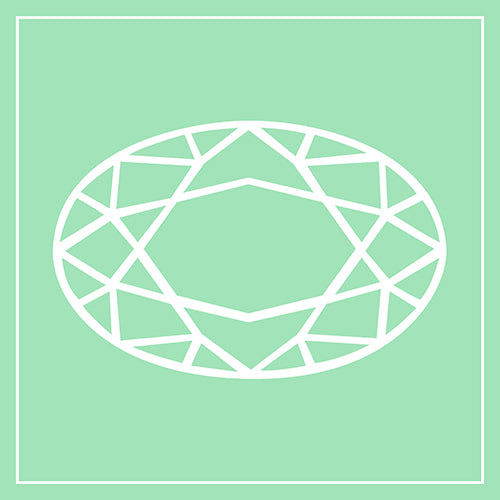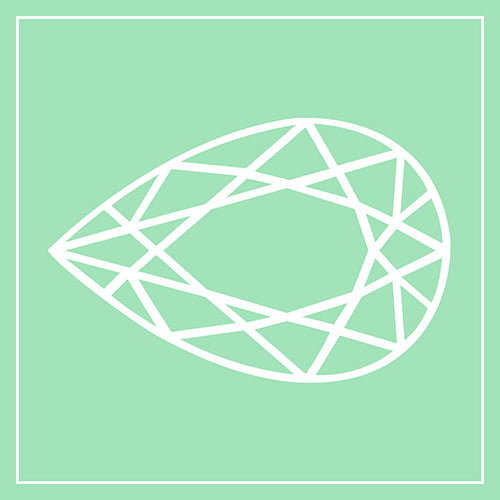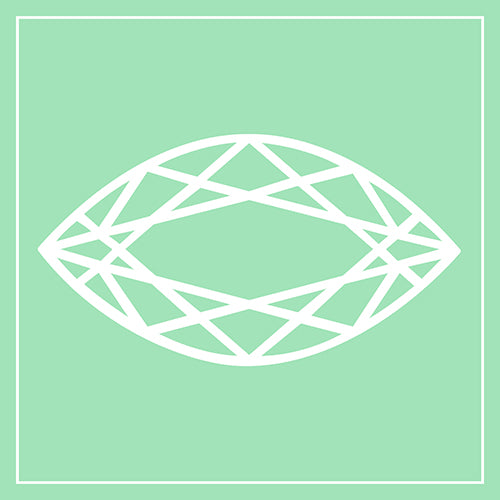Diamond Shapes
In this section we will examine each of the top 10 diamond shapes. We’ll begin with a basic summary paragraph, which will highlight unique and key attributes of each shape. Then we’ll include a table that outlines the exact combinations of cut, color, and clarity we recommend to get the most brilliance and value for each carat weight. The goal of these tables is to be a compass, pointing you towards maximum beauty and value.
In our experience, we have found that there is a certain point on each grading scale of cut, color and clarity, where you are no longer able see a noticeable difference in quality or beauty with the naked eye. Above this threshold, you are paying a premium for something that you literally cannot see. We completely understand that many people simply prefer to have the best of everything and we will be thrilled to procure a flawless diamond for you upon your request. But, in an effort to help you maximize the value of your purchase, we have decided to provide you with the exact ‘cutoff’ specifications where you will receive maximum beauty, brilliance and value in your diamond, without paying for superfluous and indistinguishable characteristics. We leave the use of this information entirely to your discretion.
Brilliant Cut vs. Step Cut Diamonds
Before we dive into our shape analysis, it is important to note the difference between the two main categories of faceted diamonds, brilliant cut and step cut, as we will be evaluating variations of both.
A diamond cut constitutes a more or less symmetrical arrangement of facets, which together modify the shape and appearance of a diamond crystal. When diamond cutters receive a rough diamond, they must consider several factors, such as the shape and size of the crystal, when choosing which shape to cut it. In order to best use a diamond’s material properties and bring out the most value and brilliance in a stone, a number of different diamond cuts have been developed. The most popular being brilliant cut and step cut.
The modern round brilliant consists of 58 facets (or 57 if the culet is excluded), and is cut to maximize brilliance. Its shape resembles a cone with a pointed tip, called the culet, and provides the maximum amount of light return through the top of the diamond. Shapes, other than round, in the brilliant family are called ‘modified brilliants.’ The most popular include princess, oval, pear, cushion, marquise, radiant and heart shaped diamonds - all of which will be covered here.
A step cut can be described as a diamond cut whose outline is either a square or rectangular shape, where the facets are arranged parallel to the girdle and one another. The cut derives its name from the way in which the facets are arranged; the facets appear larger than a brilliant cut diamond and look like steps. Another common characteristic of step cut diamonds is their ‘cropped’ corners, where sharp corners were removed in order to alleviate the potential of these weak spots cleaving or fracturing. We will be covering the two most popular step cut diamonds, the emerald and asscher cuts.
Because of their shallower pavilion and crown, step cut diamonds are generally not as bright or fiery as brilliant cut stones. However, they offer a pure and white radiance that is even more appealing to many. For this reason, variations in color and clarity are more apparent in step cuts, compared to brilliant and modified brilliants, and higher grades of color and clarity are recommended, as you will see below.
Whatever shape of diamond you choose, know that all Mint diamonds are GIA certified, 100% ethically sourced, and selected for superior cut, color and clarity by an educated and experienced diamond expert. Purchase a Mint diamond with utmost confidence that it is chosen for its superior beauty, brilliance and value.











